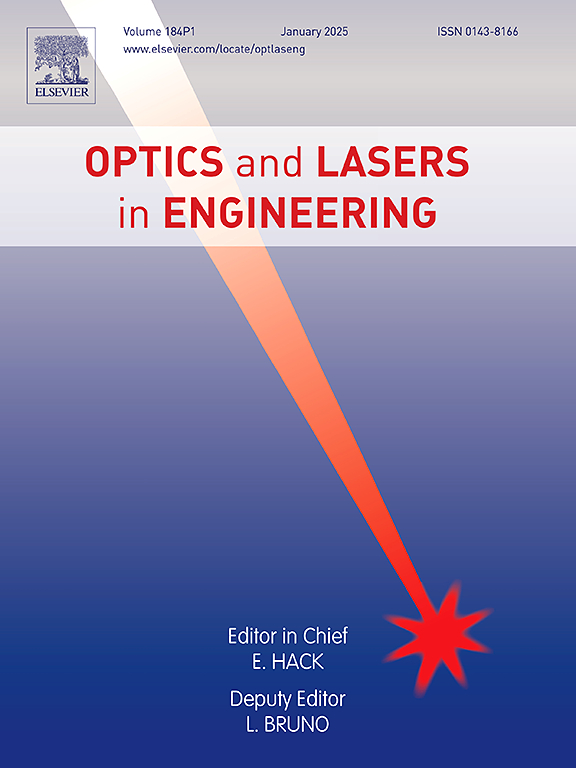Holistic design of optical phased arrays with wide beam scanning range and high side mode suppression ratio using an improved nutcracker optimization algorithm
IF 3.5
2区 工程技术
Q2 OPTICS
引用次数: 0
Abstract
We propose a hybrid-strategy improved nutcracker optimization algorithm (INOA) with a multi-fitness function to design a non-uniform optical phased array (OPA) with optimized antenna spacing distribution for a wide steering angle and high side mode suppression ratio (SMSR). The global search capability is enhanced by incorporating the good point set initialization and t-distribution perturbation. INOA achieves higher convergence accuracy and faster convergence speed than genetic algorithm (GA) and particle swarm optimization (PSO) algorithm. The results show that INOA requires >60 times and 8 times fewer iterations than GA and PSO, respectively, to reach the same fitness value. In addition, INOA is used to optimize the antenna phase distribution of the non-uniform OPA at different beam steering angles. Using this approach, we design a high-performance 128-element OPA, as an example, achieving a beam scanning range of ±85° and a SMSR of 14.67 dB. Compared to traditional design methods, the proposed approach improves the SMSR by 3.48 dB at 80° and 3.42 dB at 85°, while achieving an improvement of over 6 % in power in the main lobe at large steering angles. Furthermore, we investigated the influence of non-uniform excitation amplitude on the SMSR. It is found that our design has a high tolerance to fabrication error.
采用改进的胡桃夹子优化算法进行宽波束扫描范围和高侧模抑制比的光学相控阵整体设计
提出了一种基于多适应度函数的混合策略改进胡桃钳优化算法(INOA),用于设计具有宽转向角和高侧模抑制比(SMSR)的天线间距优化分布的非均匀光学相控阵(OPA)。通过引入良好的点集初始化和t分布摄动,增强了全局搜索能力。与遗传算法(GA)和粒子群优化(PSO)算法相比,INOA具有更高的收敛精度和更快的收敛速度。结果表明,INOA比GA和PSO分别需要60次和8次迭代才能达到相同的适应度值。此外,利用相位分析对不同波束转向角下非均匀OPA的天线相位分布进行了优化。以该方法设计的高性能128元OPA为例,实现了波束扫描范围为±85°,SMSR为14.67 dB。与传统设计方法相比,该方法在80°角和85°角下分别将SMSR提高了3.48 dB和3.42 dB,同时在大转向角下主瓣功率提高了6%以上。此外,我们还研究了非均匀激励幅度对SMSR的影响。结果表明,该设计对加工误差具有较高的容忍度。
本文章由计算机程序翻译,如有差异,请以英文原文为准。
求助全文
约1分钟内获得全文
求助全文
来源期刊

Optics and Lasers in Engineering
工程技术-光学
CiteScore
8.90
自引率
8.70%
发文量
384
审稿时长
42 days
期刊介绍:
Optics and Lasers in Engineering aims at providing an international forum for the interchange of information on the development of optical techniques and laser technology in engineering. Emphasis is placed on contributions targeted at the practical use of methods and devices, the development and enhancement of solutions and new theoretical concepts for experimental methods.
Optics and Lasers in Engineering reflects the main areas in which optical methods are being used and developed for an engineering environment. Manuscripts should offer clear evidence of novelty and significance. Papers focusing on parameter optimization or computational issues are not suitable. Similarly, papers focussed on an application rather than the optical method fall outside the journal''s scope. The scope of the journal is defined to include the following:
-Optical Metrology-
Optical Methods for 3D visualization and virtual engineering-
Optical Techniques for Microsystems-
Imaging, Microscopy and Adaptive Optics-
Computational Imaging-
Laser methods in manufacturing-
Integrated optical and photonic sensors-
Optics and Photonics in Life Science-
Hyperspectral and spectroscopic methods-
Infrared and Terahertz techniques
 求助内容:
求助内容: 应助结果提醒方式:
应助结果提醒方式:


